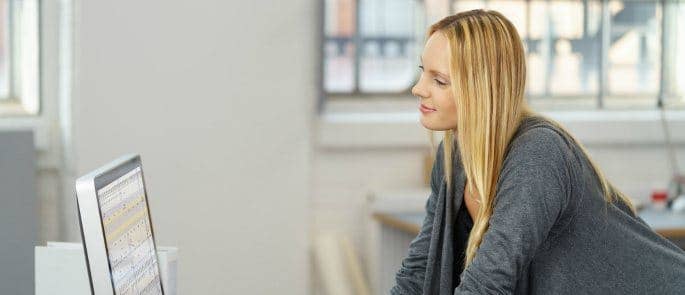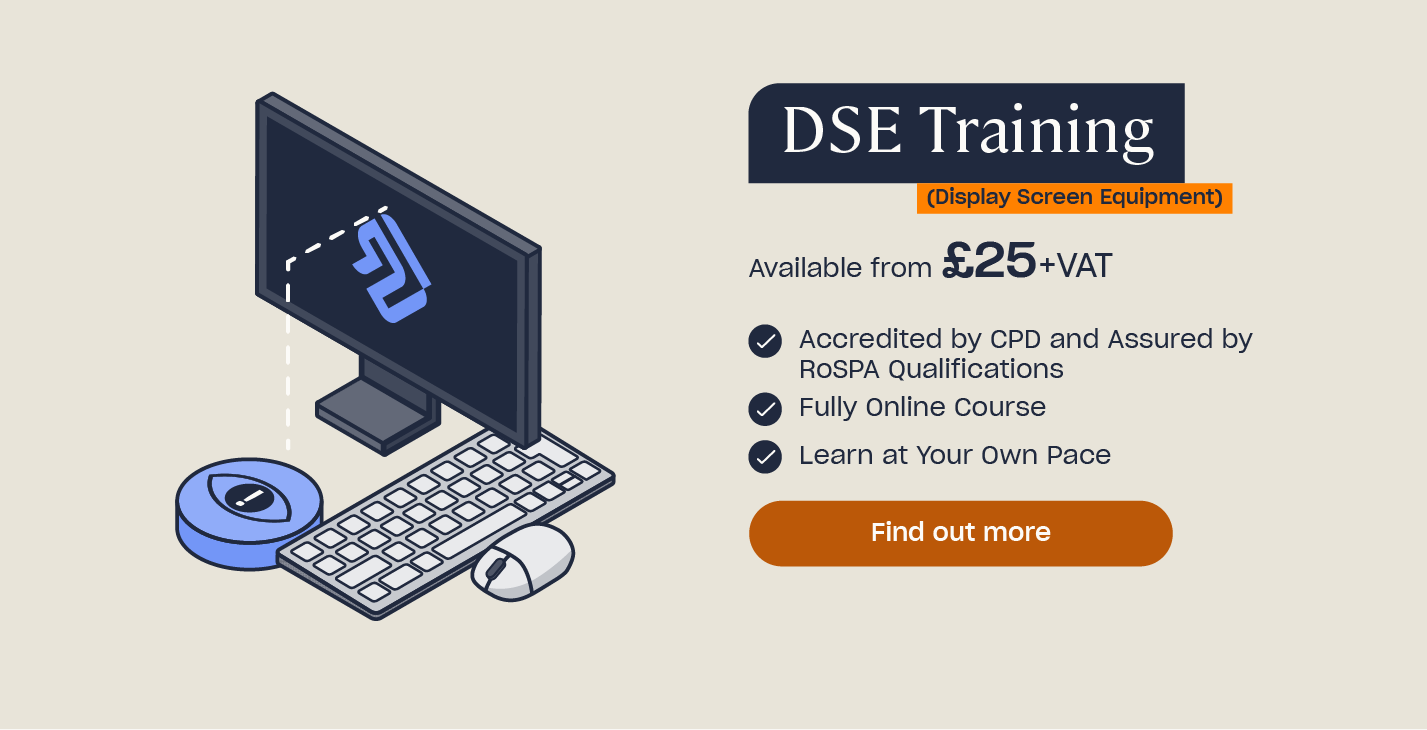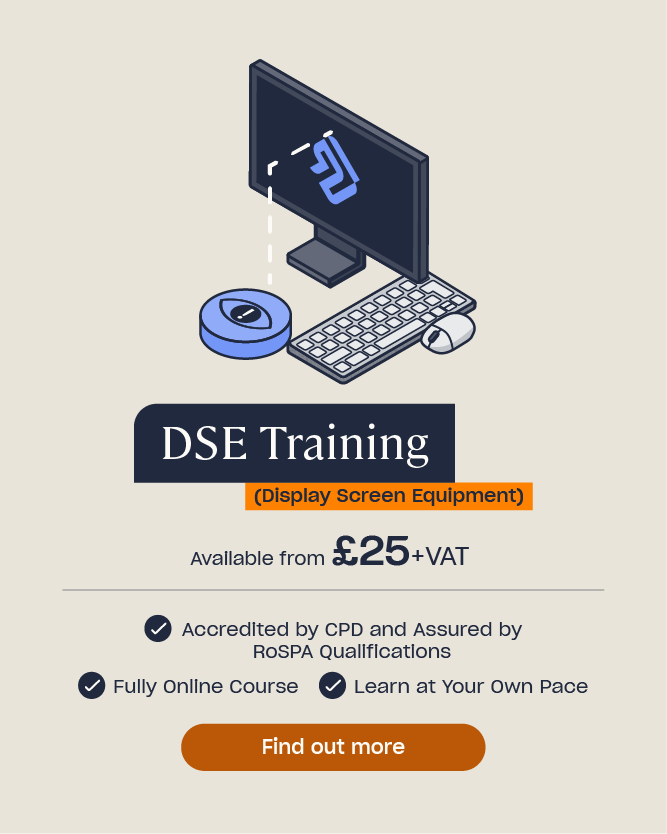DSE & Posture Checklist for Standing Desk Users
The Importance of Understanding DSE
Many workplaces assemble standing desks in place of traditional sitting ones these days – whether it’s because the nature of users’ job roles require a standing desk, to increase users’ productivity, because it’s deemed a safer alternative to having people work sitting in a static position all day, or maybe all three.
But the reality is this: no matter what sort of desk setup they have, the user will be at risk of health issues if it’s not arranged correctly, if they don’t actively adopt a good posture, and if they don’t stretch their legs every now and then.
Despite what you may have been led to believe, standing desks are neither safer nor more harmful for the body than sitting ones. The body simply isn’t designed to be immobile in any position – whether it’s sat down or stood up – for prolonged periods of time.
However, if your work role requires the use of a standing desk or you have opted to alternate between sitting and standing desks – which is actually an excellent compromise as it encourages the user to regularly change posture – you need to know how to ergonomically arrange display screen equipment (DSE) and how your body should ideally be positioned.
Need a Training Course?
Our DSE Training is suitable for anyone who uses DSE for a significant part of their normal working day. It teaches you how your workplace should be set up so that the chances of developing musculoskeletal problems are minimised. This course also covers standing desks.
How should DSE be arranged on a standing desk?
Although there is some overlap, the layout of monitors, keyboard, and mouse will not be exactly the same on a standing desk as it is for a sitting one, because the body will be oriented differently. Below is a checklist of how to properly arrange equipment on a standing desk.
Monitor:
- The monitor’s platform should be on the same level as the user’s line of sight.
- The monitor should be central on its platform, directly in front of the user.
- The monitor should be roughly an arm’s length away from the user.
- The user’s eyes should be level with the top of the monitor (when their head is in a neutral position).
- The monitor should be tilted back at a slight angle (20 degrees).
Keyboard:
- The keyboard’s platform should be slightly below elbow level (when the user’s arms are loose at their side).
- The keyboard should be positioned in front of the user with the G, H, and B keys in line with the centre of their body.
- The keyboard should be separate from the screen.
Mouse:
- The mouse should be on the same platform as the keyboard and close to it.
- The mouse should be of a suitable shape and size that fits comfortably in the user’s hand.
- The mouse’s movement should not be slippery or stiff; use a mouse mat if required.

What should my posture look like when working at a standing desk?
Slouching in a chair is now synonymous with bad posture, but standing up pencil-straight for hours on end is equally damaging to the body. If you’ve ever had to stand in a queue for more than half an hour, you know how quickly your body starts complaining. So think about doing that for hours and hours on end, every day.
Standing for prolonged periods places a great deal of pressure on the lower back and feet, and can lead to varicose veins (veins in the legs that have become enlarged and twisted as a result of excessive pressure).
Below is a checklist you should aim to follow when working at a standing desk so to minimise strain:
- The user’s legs, torso, neck, and head should be kept in line with the display screen equipment.
- Elbows should be at a relaxed, 90 degree angle when using the keyboard and mouse.
- The user should not need to bend or twist their wrists or neck.
- The user should not lock their knees.
- The user should alternate the leg on which pressure is being applied (e.g. by using a footstool; see below for more info).
What accessories do I need to make my standing desk ergonomic?
Properly arranging equipment and adopting a good posture when working at a standing desk is only half the battle against health issues such as musculoskeletal disorders. Additional equipment that helps relieve strain from your legs and feet is as essential to your setup as the desk itself.
Without this equipment, you’re vulnerable to long-term bodily harm that you might not even realise has occurred until it’s past the point of simply taking ibuprofens to calm it.
Acquire the following for your standing desk:
- A standing (anti-fatigue) mat – a cushiony surface will help ease the pressure that’s placed on a user’s legs, feet, and heels, and will help improve circulation. According to thewirecutter.com, mats that proved effective when tested were around ¾ of an inch thick. Anti-fatigue mats should offer enough support that the user’s feet are under less pressure but shouldn’t be so squishy that their feet sink right into it.
- A footstool – this enables users to stand on one foot at a time and change leg positions throughout the day, easing strain and improving circulation. Use it to alternately bend the knees slightly and alleviate pressure. The exact height of the footstool needed will vary from person to person depending on their height and leg length, but some trial and error should help with finding one that’s most comfortable.
- Supportive shoes – remember: the entire weight of the body when standing is being taken by the feet, so wearing proper shoes will help take some of the pressure off them. When combined with a good anti-fatigue mat, the strain of standing for prolonged periods will be minimised even further.
You might even consider getting a height-adjustable desk, so you can alternate between standing and sitting. The only downside here is that switching around equipment and making sure it’s ergonomic each time can be time-consuming and disruptive to your workflow.
Either way, you should take regular breaks, every hour if possible, to stretch your legs and walk around.
The appeal of standing desks is that they supposedly boost productivity, but this only works if the body feels less sluggish. Sure, adapting your work routine to involve standing at a desk rather than sitting can give you a temporary boost, but with long-term incorrect use, you will feel just as lethargic as if you were slouching in a chair.
That’s why when working at a standing desk (and any desk really), throughout the day you need to be regularly moving and stretching and changing your posture to improve circulation, relieve tension, and give your body a break from all the pressure of standing statically for a long working day.

Further Resources:
- Understanding DSE: Do You Know How to Set Up A Desk Ergonomically?
- DSE Training
- Health and Safety When Working with Computers: An Office Guide
- DSE Risk Assessment Template – Free Download
- DSE Workstation Assessment and Checklist
- DSE Assessor Course











